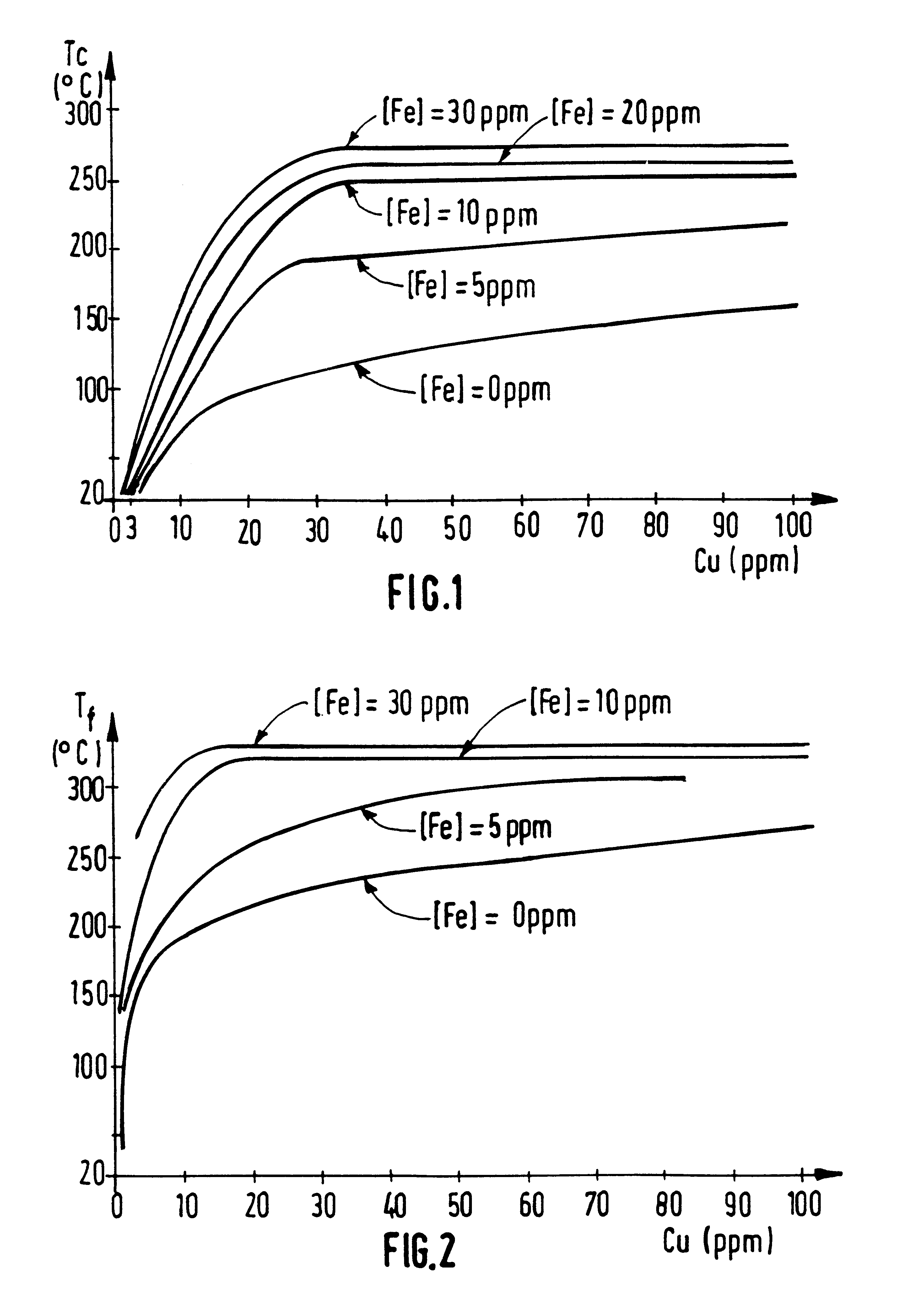Cathodic sputtering targets made of aluminum alloy
a technology of aluminum alloy and cathode sputtering, which is applied in the direction of electrodes, diaphragms, ion implantation coatings, etc., can solve the problems of heterogeneity of target composition, difficult etching, and observed circuit degradation during us
- Summary
- Abstract
- Description
- Claims
- Application Information
AI Technical Summary
Benefits of technology
Problems solved by technology
Method used
Image
Examples
example 1
About 4.6 tons of an aluminum alloy were smelted in an electrically heated furnace, starting from refined aluminum with a purity equal to 99.998%, to which small quantities of Fe and Cu were added in order to obtain an Fe content of 8 ppm and a Cu content of 40 ppm. The alloy obtained also contained 9 ppm of Si.
The alloy obtained was then cast in the form of a 3200 mm long rolling slab with a cross-section of 500 mm.times.1055 mm. During casting, the alloy was treated in line in two successive ladles in order to reduce the contents of dissolved hydrogen and inclusions. The first ladle was a degassing ladle equipped with an argon injection rotor according to the ALPUR.RTM. process developed by the applicant. The second ladle was a filtration ladle with a deep bed of tabular alumina gravel, also made according to a process developed by the applicant and known under the name of PECHINEY DBF (Deep Bed Filter).
The slab was then sawn in order to eliminate disturbed areas at the bottom and...
example 2
Tests were also carried out under the same conditions as in example 1, except for the procedure for smelting the aluminum alloy at the time of casting.
At the time of casting, B and Ti were continuously added to the liquid metal using high purity aluminum alloy wire containing 5% Ti and 1% by weight. The rate at which wire was added was adjusted to give a Ti content of the order of 50 ppm and a B content of the order of 10 ppm in the cast alloy, in other words 1 kg of alloy wire was added per ton of cast metal.
Macrographic segments sampled while sawing the ends of the "as cast" slab then revealed a much finer granular structure of the metal than in the previous example, and a large reduction of shrinkage porosities in the central part of the slab.
After rolling, under conditions identical to those in example 1, the grain of the plates was much finer and its dimensions did not exceed 1 mm in all directions. The measured resistivity on plate samples did not exceed 2.80 .mu..OMEGA. at 20...
PUM
| Property | Measurement | Unit |
|---|---|---|
| temperature | aaaaa | aaaaa |
| electrical resistivity | aaaaa | aaaaa |
| temperature | aaaaa | aaaaa |
Abstract
Description
Claims
Application Information
 Login to View More
Login to View More - R&D
- Intellectual Property
- Life Sciences
- Materials
- Tech Scout
- Unparalleled Data Quality
- Higher Quality Content
- 60% Fewer Hallucinations
Browse by: Latest US Patents, China's latest patents, Technical Efficacy Thesaurus, Application Domain, Technology Topic, Popular Technical Reports.
© 2025 PatSnap. All rights reserved.Legal|Privacy policy|Modern Slavery Act Transparency Statement|Sitemap|About US| Contact US: help@patsnap.com

